
Select City
Select City
Laser treatment for varicose veins is an advanced, minimally invasive procedure designed to eliminate unsightly and painful varicose veins. Using targeted laser energy, this technique seals the affected veins, restoring both the aesthetics and comfort of your legs. If you're troubled by varicose veins and seek a swift, effective solution, consult with Pristyn Care’s team of skilled specialists. Book your appointment today for expert care and a customised treatment approach with Pristyn Care.
Laser treatment for varicose veins is an advanced, minimally invasive procedure designed to ... Read More
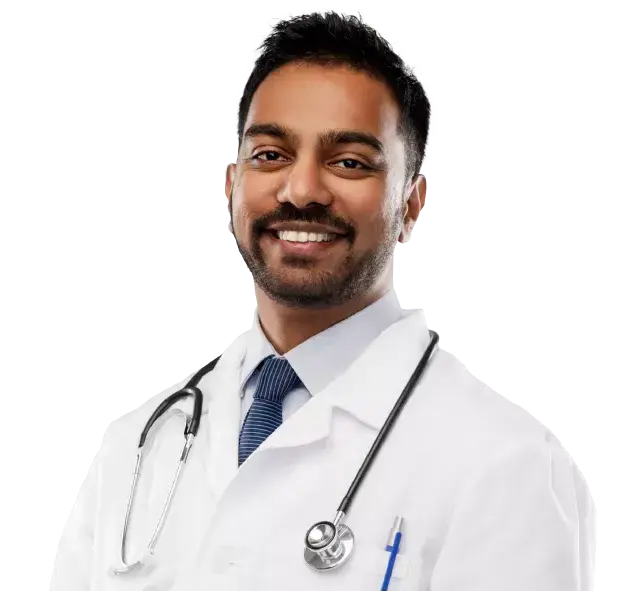

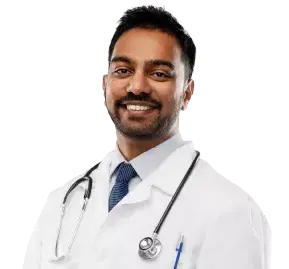

Free Consultation

Free Cab Facility

No-Cost EMI

Support in Insurance Claim

1-day Hospitalization

USFDA-Approved Procedure
Choose Your City
It help us to find the best doctors near you.
Bangalore
Chennai
Coimbatore
Delhi
Hyderabad
Kochi
Mumbai
Pune
Thiruvananthapuram
Delhi
Gurgaon
Noida
Ahmedabad
Bangalore
Laser treatment for varicose veins, known as endovenous laser therapy (EVLT), offers a minimally invasive option to alleviate the discomfort and appearance of varicose veins. This procedure is typically performed by a vascular surgeon or a specialist in venous disorders.
Under local anaesthesia, a thin laser fibre is inserted into the affected vein, delivering targeted laser energy that heats and seals the vein, causing it to collapse and eventually be absorbed by the body.
The necessity of this treatment arises from its benefits, which include reduced pain, minimal scarring, and a swift recovery period, allowing patients to return to normal activities promptly. The procedure is highly favoured for its effectiveness in improving venous health and overall quality of life.
• Disease name
Varicose Veins
• Surgery name
Phlebectomy/Varicose Vein Excision
• Duration
60-90 minutes
• Treated by
Vascular Surgeon / Phlebologists

Fill details to get actual cost
Laser treatment for varicose veins employs light energy to shrink and close off the unsightly veins, offering patients relief from both the aesthetic concern and the physical discomfort associated with this condition. The primary types include:
Prior to undergoing laser treatment for varicose veins, a thorough diagnosis is essential to determine the suitability and scope of treatment. The diagnostic process typically involves:
Each of these diagnostic tools plays an important role in ensuring that the laser treatment is appropriately targeted and executed, enhancing the effectiveness of the procedure and patient outcomes.
The procedure involves a series of steps aimed at ensuring precision and efficacy. Here is what one can expect:

Diet & Lifestyle Consultation

Post-Surgery Free Follow-Up

Free Cab Facility

24*7 Patient Support
Laser treatment for varicose veins offers a less invasive alternative to traditional surgery, but it isn’t suitable for everyone. Here’s how to determine if you might be a candidate for this procedure:
By assessing these criteria, a specialist can determine whether laser treatment is an appropriate and effective option for a patient’s varicose veins.
Laser treatment for varicose veins is recognized as a highly effective method for alleviating the symptoms and aesthetic concerns associated with varicose veins. The benefits of this surgical procedure are numerous and significant:
Preparing for laser treatment for varicose veins involves several important steps to ensure the best outcomes and minimise any risks. Here’s how to prepare:
Recovery from laser treatment for varicose veins is generally straightforward, but proper care is essential for optimal healing. Here’s what to expect and several key recovery tips:
By adhering to these recovery tips and precautions, patients can ensure a smoother and more effective healing process after laser treatment for varicose veins.
While laser treatment for varicose veins is generally safe and effective, like any medical procedure, it does carry potential risks and complications. Understanding these risks is crucial for anyone considering this treatment:
It is important to discuss these risks with a varicose veins specialist to fully understand the potential outcomes of the procedure.
The varicose veins treatment cost in India can vary significantly depending on several factors. Factors affecting the cost include:
Specialist’s experience: More experienced specialists may charge a higher fee for their expertise.
Coverage for laser treatment for varicose veins under insurance in India largely depends on whether the procedure is deemed medically necessary. Most health insurance policies cover the treatment if it is required to alleviate painful symptoms or prevent further health complications. Cosmetic treatment, however, is usually not covered. Patients should consult their insurance provider to understand the specifics of their coverage and any potential out-of-pocket costs.
Yes, while laser treatment is effective, new varicose veins can develop due to genetic factors or inadequate lifestyle adjustments. It’s crucial to follow post-treatment advice to minimise this risk.
Walking is recommended shortly after treatment to enhance blood circulation and speed up the recovery process.
Patients typically resume normal activities within one day. However, the complete healing process can extend over several weeks, during which care must be taken.
Immediate improvement in the appearance of treated veins is noticeable, with optimal results becoming apparent as the body naturally absorbs the treated veins.
Post-treatment recommendations include maintaining a healthy weight, exercising regularly, and using compression stockings to prevent new varicose veins from developing.
It is advisable to wait a few months postpartum to allow your body to recover naturally before undergoing laser treatment for varicose veins.
Laser treatment is versatile, effectively addressing both spider veins and varicose veins, although the treatment approach may vary slightly between the two.
There is no strict age limit, but a patient’s overall health and specific vein conditions are critical factors in determining eligibility.
Initial follow-up is usually within a few weeks post-treatment to assess the success of the procedure and ensure proper vein closure.
Laser treatment is often more effective for larger varicose veins, while sclerotherapy is typically used for smaller or spider veins.
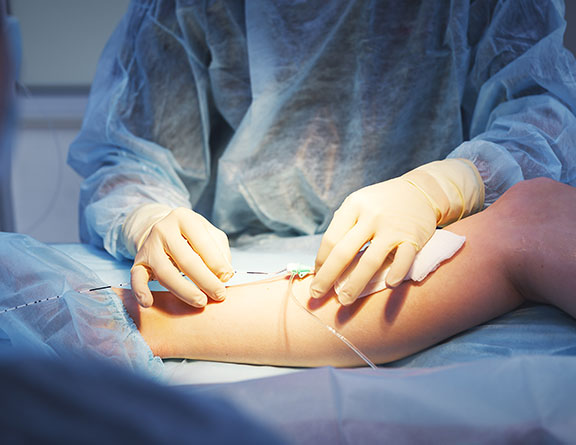
Endovenous laser therapy ablation
Also known as endovenous laser treatment or EVLA, this is a minimally invasive ultrasound-guided procedure that involves the use of ultrasound images and laser fiber in order to kill the delicate lining of the veins. After a few days following the procedure, the body absorbs the dead tissues, closing off the abnormal veins with minimal or no discomfort. This is one of the most commonly preferred methods as it involves far fewer complications, and the recovery time, as well as the success rate of this method, is much faster and higher than that of any surgical process.
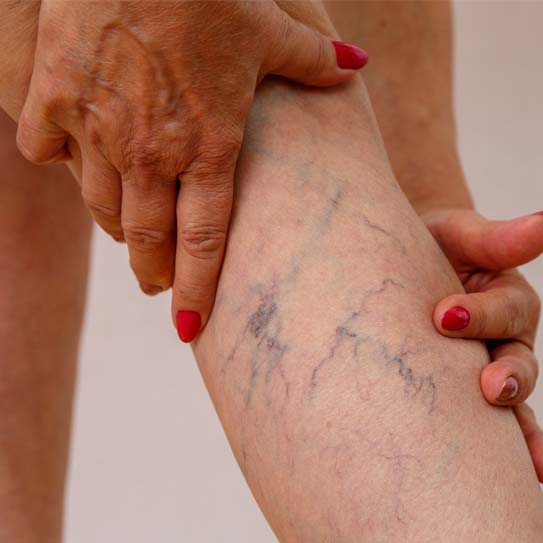
Vein Ligation and Stripping
This is a surgical procedure that is done in order to remove a damaged vein and prevent future complications like ulcers, clotting, etc., in the affected vein. During the surgery, two to three incisions, each ranging around 5 cm in diameter, are made over the damaged veins, and the veins are tied off or ligated. Normally, the recovery time in this procedure is longer than that of the minimally invasive techniques. This method is usually preferred in treating people who are suffering from trophic ulcers or varicose eczema, as it is in this stage that skin starts decomposing and develops into a non-healing ulcer.
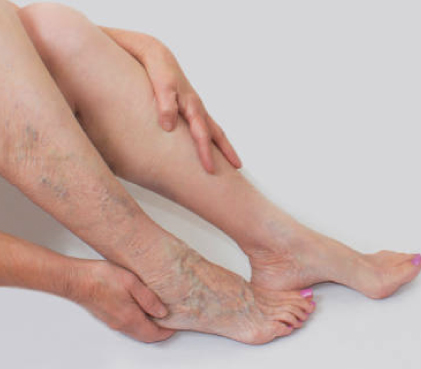
Transilluminated Powered Phlebectomy
This is a vein removal procedure that makes use of a bright light, which is known as an endoscopic transilluminator, to illuminate the vein. In this process, a number of incisions will be made on your leg, and the surgeon will place the transilluminator underneath your skin so they are able to see the veins that need to be removed. As soon as the veins are identified, they will be cut and will be removed through the incisions using a suction device.
Priyanka Mishra
Recommends
The doctor has provided complete guidance and he is very knowledgeable. Clearly he has explain the procedures and prescribed good treatment and medicines.
Venu Gopal Krishna
Recommends
Doctor is very friendly and humble. Explained everything very patiently.
Ramya
Recommends
He understood the difficulty from my side and done good analysis to derive the solution.
Mallam varsha
Recommends
Coming to pristyn care some miss communication update about surgery date and admission process and everything is good & some time follow is missing
Itesh Kumar
Excellent after sale service & Care co-ordinator was very supportive.
.svg)
.svg)